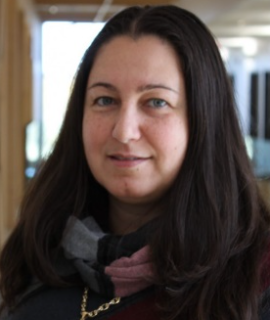Title : Opportunities for waste recovery in mining industry
Abstract:
Mining industry has an essential contribution to the global economic development and to the overall progress of the human society. At the same time, mining industry generates and must handle responsibly large volumes of residues with significant environmental impacts.
Several gigatons of waste rock are generated yearly worldwide by mineral resources extraction and this amount is expected to grow with the increase of metals global demand and of the lower-grade larger-scale deposits exploited. The waste rocks are removed to access the orebody and are stored in large surface piles, exposed to the environmental conditions. However, the recovery of the waste rock for roads / railways construction and reparation, manufacturing of construction materials (e.g. bricks, concrete and clinker), concrete and steel sandblasting, aggregates and restauration, reduces the environmental footprint of mining activity.
The interaction between the run-off and the mine waste rocks and tailings can generate acidic, neutral or alkaline mine drainage, bearing variable concentrations of contaminants: metals (Cd, Ni, Mn, Pb, Zn), metalloids (As, Sb), anions (CN?, SO42- ) and having season impacted flow. Moreover, environmental repercussions of the mine drainage may persist hundreds to thousands of years after mine closure. In order to limit the discharge of contaminants into environment, mine drainage treatment is mandatory, although costly, while after mine closure, passive treatment becomes a challenge. However, mine drainage bears interesting concentrations of useful metals (Ni, Zn) that can be recovered within the process of water treatment. Mine water treatment is also an opportunity to recover waste generated by different anthropic activities (agriculture, various industries, sewage sludge). Waste can be modified by simple treatment in order to increase its stability and performance for water treatment, and once spent, it can be further processed to recover the treated metals. Moreover, restauration of mine sites after closure involves revegetation. The organic layer necessary to the implantation of the vegetation can be constituted from readily and largely available agricultural waste, or food industry waste, compost. Large amount of various waste (e.g. ash, eggshells, seashells) can be recovered in this way, while their disposal is challenging.
Waste rocks and tailings originated from former mining operations bear interesting grades in valuable metals (Au, Cu, Ni, Zn), sometimes even higher than those currently mined, as mining techniques have improved over the past decades. From these sources, metals are successfully recovered by chemical and biological leaching.
Briefly, mining industry continue to sustain our standard of living while handling responsibly large volumes of waste. Some waste can be recovered (construction, restauration), or used as a source to further recover economic values (metals). In addition, mine water treatment and restauration of closed mine sites employ various waste with challenging disposal.
Audience Take Away
Explain how the audience will be able to use what they learn?
- The presentation will be representative for the approach in Québec, Canada. It could improve the social acceptability towards mining projects. Over the past decades, numerous scientific papers have been published on mine drainage prediction, mine waters treatment by waste issued from anthropic activities, metals recovery. Within my presentation, results of several applied science projects will be presented, to support our approach and, by the mean of references (published scientific papers and reports), to inspire the audience for further research work and applied science projects
How will this help the audience in their job?
Firstly, the work described within the references that will be mentioned in the presentation could be useful for specialists from the mining sector (students, professors, professionals). Secondly, new partnerships could eventually be established after the conference.
- Is this research that other faculty could use to expand their research or teaching?
Definitely, our research work is up to date in the mining field.
- Does this provide a practical solution to a problem that could simplify or make a designer’s job more efficient?
- Will it improve the accuracy of a design, or provide new information to assist in a design problem?
- List all other benefits.


